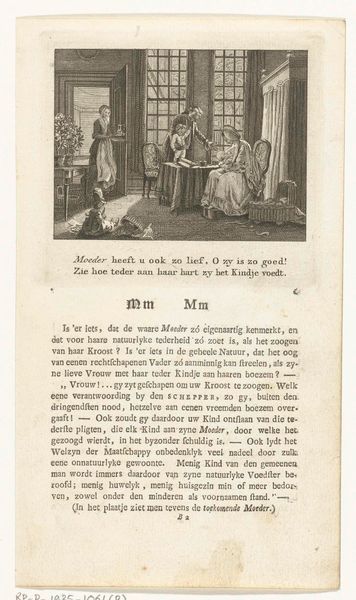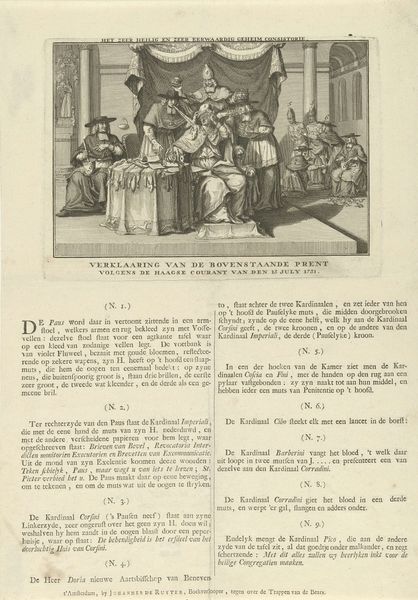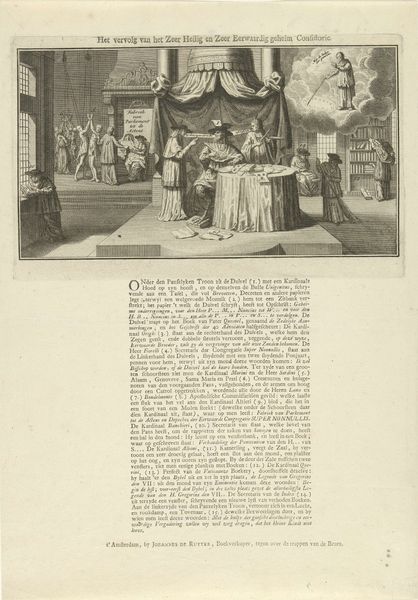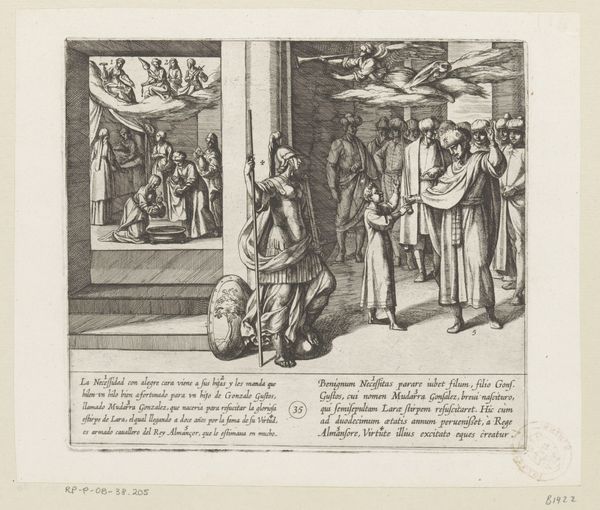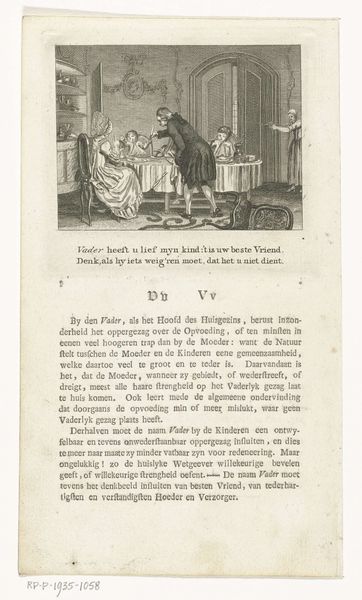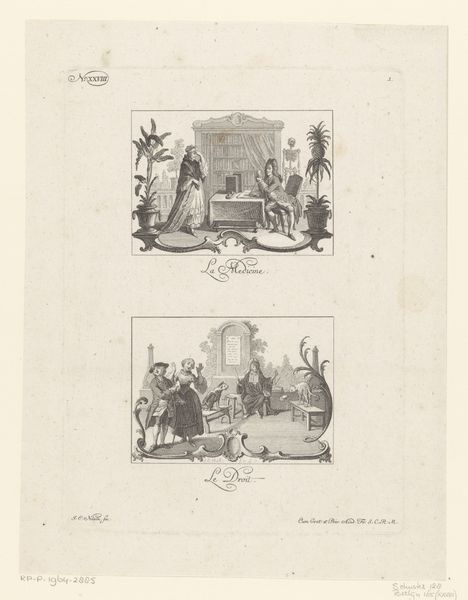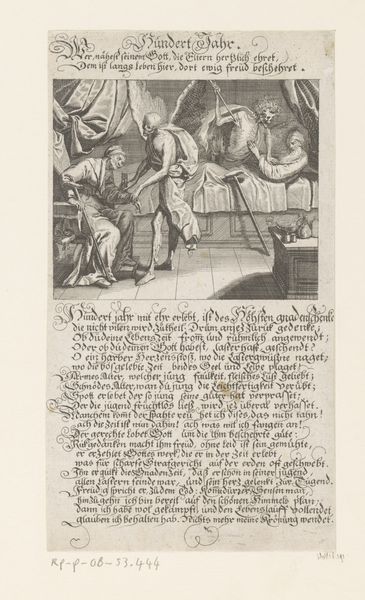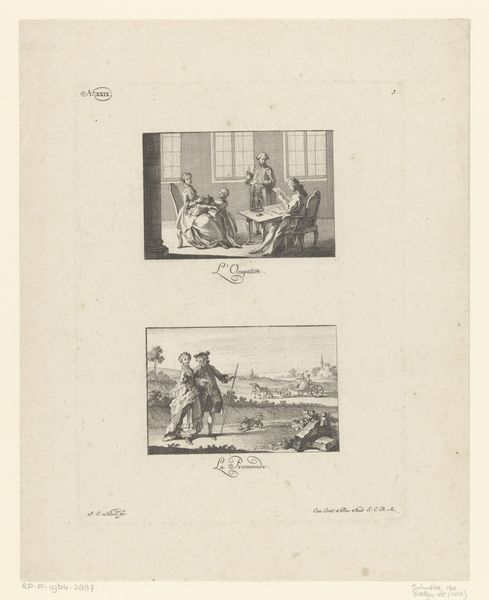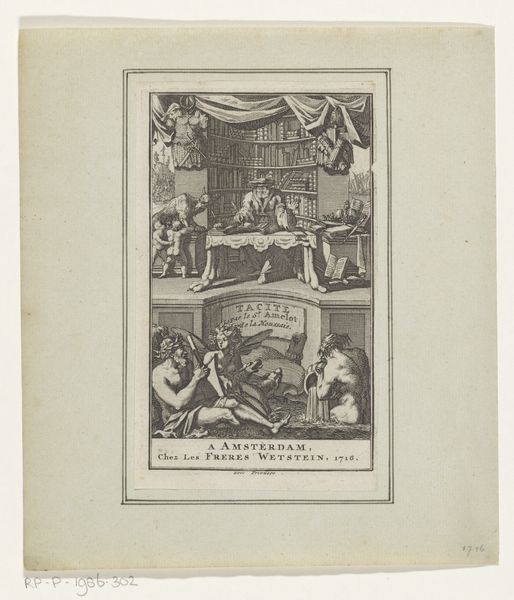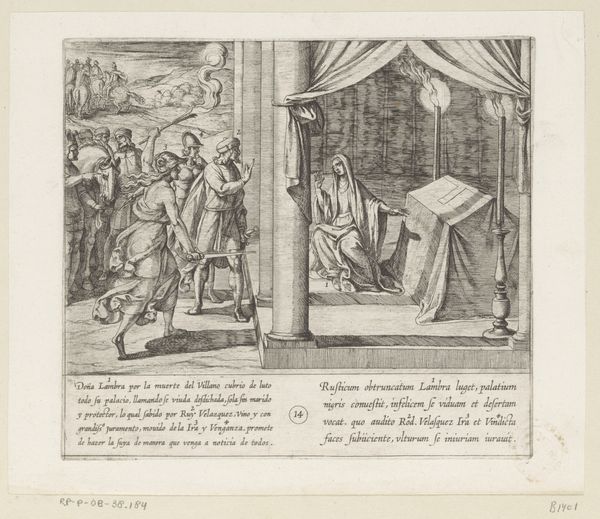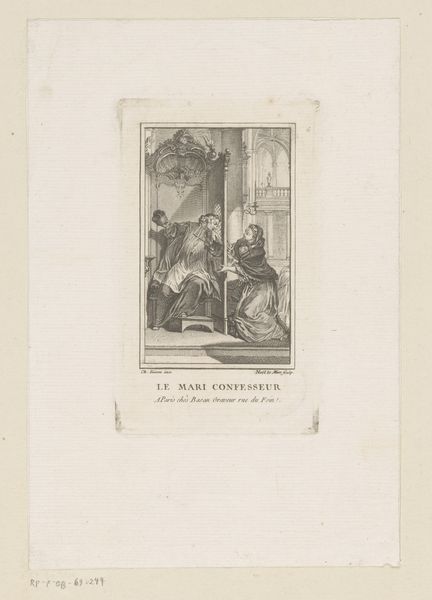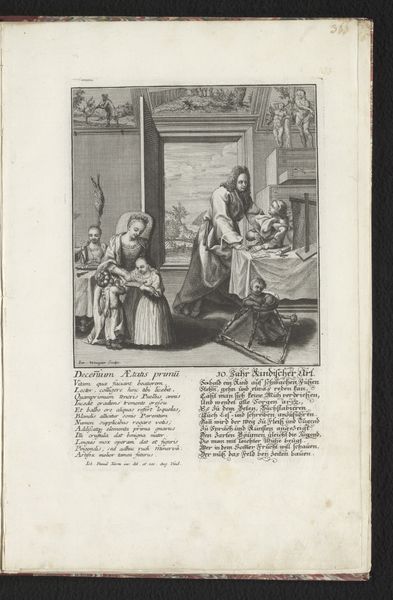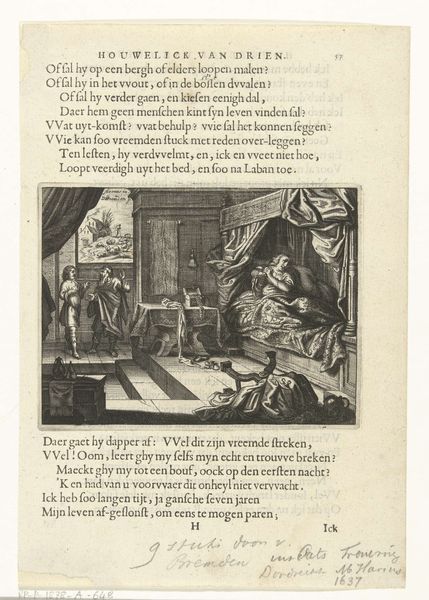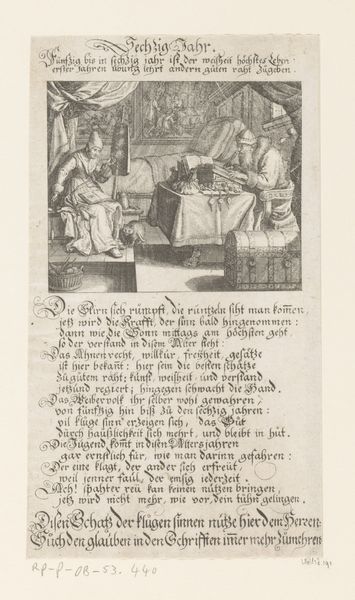
Dimensions: height 94 mm, width 102 mm, height 205 mm, width 119 mm
Copyright: Rijks Museum: Open Domain
This etching, "Zout en zeep" or "Salt and Soap," was made by Noach van der Meer II in the 18th Century. It's a humble scene depicting a woman at her daily ablutions, but the print’s material—ink on paper—and its repetitive, reproducible nature, is key to understanding its original function. Prints like this one were widely circulated, bringing images and ideas to a broad audience. They democratized visual culture, connecting it to the developing forces of consumerism and information exchange. Salt and soap, common household commodities, are presented here almost as moral virtues. Consider the labor involved in the making of the artwork, from the sourcing of materials to the skilled handwork of the engraver. The artist has transformed base metals into something of higher value, but also something that could be endlessly copied. This print challenges traditional notions of artistic value, inviting us to consider the broader social and economic context in which it was produced.
Comments
No comments
Be the first to comment and join the conversation on the ultimate creative platform.
